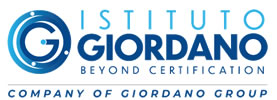Labinsight: materials chemistry and environmental chemistry
(Pubbl. 18/09/2023)Our Chemical Laboratory was founded about thirty years ago in order to support the Institute’s in-house activities.
With the passing of time, in the wake of new national and international technical standards and specifications, the division has developed, offering, including externally, a range of services performed with the aid of state-of-the-art equipment that ensures the reliability and repeatability of results. The laboratory is divided into:

All laboratory testing is performed in strict compliance with the test methods recommended by the major national and international standards bodies: UNI, UNICHIM, ASTM, ISO, DIN, etc.
To obtain more in-depth knowledge of this section, we spoke to Paolo Orioli, a highly experienced technician who has been in charge of the lab for many years.
What are the main activities carried out in the laboratory?
The laboratory is mainly engaged in material characterisation and performance. In accordance with the latest European and international standards, we can perform resistance to artificial weathering tests, wear, pull-off/adhesion and impact tests, physical tests such as glass transition temperature, heat of combustion (calorific value) and chemical tests such as volatile organic compound emission testing and determination of formaldehyde.
Materials we handle include rubber, plastic, metal, wood and biofuels, tiles, paints and varnishes, renders and plasters, construction and finishing materials, furnishings and various types of coating and cladding.
What equipment do you use to carry out these tests?
Over the years, the laboratory has been fitted with the best artificial weathering equipment including Kesternich chamber, salt spray cabinet, xenon test chamber, ozone meter, UV/condensation chamber, temperature and humidity chamber.
Obviously, we must have material characterisation instruments such as Taber abrasion tester, infrared spectrophotometer, differential scanning calorimeter (DSC), Mahler bomb calorimeter and chemical characterisation instruments including ICP spectrometer, gas chromatograph/mass spectrometer, ion chromatograph.
Do you get requests for particularly interesting tests?
Over the last few years, increasingly greater attention is being paid to the problem of indoor air pollution.
Therefore, the laboratory is continually investing in improving its capacity, in terms of both numbers and quality, to perform tests to determine the emission of hazardous volatile organic compounds (the notorious VOCs) in accordance with standard EN 16516 based on the ISO 16000 series and legislation in various European countries such as French A+ emission regulations and Italian CAM (minimum environmental criteria) requirements.
We expect to triple our current testing capacity by 2024, thus reducing customer waiting times.
 For more details see the page.
For more details see the page.
With the passing of time, in the wake of new national and international technical standards and specifications, the division has developed, offering, including externally, a range of services performed with the aid of state-of-the-art equipment that ensures the reliability and repeatability of results. The laboratory is divided into:
- the MATERIALS CHEMISTRY department for performing life cycle assessments of materials by exposing them to various stress and artificial weathering systems;
- the ENVIRONMENTAL CHEMISTRY department that deals with the characterisation of waste, water, excavated earth and rocks (borrow), pellets and refuse-derived fuel (RDR).

All laboratory testing is performed in strict compliance with the test methods recommended by the major national and international standards bodies: UNI, UNICHIM, ASTM, ISO, DIN, etc.
To obtain more in-depth knowledge of this section, we spoke to Paolo Orioli, a highly experienced technician who has been in charge of the lab for many years.
What are the main activities carried out in the laboratory?
The laboratory is mainly engaged in material characterisation and performance. In accordance with the latest European and international standards, we can perform resistance to artificial weathering tests, wear, pull-off/adhesion and impact tests, physical tests such as glass transition temperature, heat of combustion (calorific value) and chemical tests such as volatile organic compound emission testing and determination of formaldehyde.
Materials we handle include rubber, plastic, metal, wood and biofuels, tiles, paints and varnishes, renders and plasters, construction and finishing materials, furnishings and various types of coating and cladding.
What equipment do you use to carry out these tests?
Over the years, the laboratory has been fitted with the best artificial weathering equipment including Kesternich chamber, salt spray cabinet, xenon test chamber, ozone meter, UV/condensation chamber, temperature and humidity chamber.
Obviously, we must have material characterisation instruments such as Taber abrasion tester, infrared spectrophotometer, differential scanning calorimeter (DSC), Mahler bomb calorimeter and chemical characterisation instruments including ICP spectrometer, gas chromatograph/mass spectrometer, ion chromatograph.
Do you get requests for particularly interesting tests?
Over the last few years, increasingly greater attention is being paid to the problem of indoor air pollution.
Therefore, the laboratory is continually investing in improving its capacity, in terms of both numbers and quality, to perform tests to determine the emission of hazardous volatile organic compounds (the notorious VOCs) in accordance with standard EN 16516 based on the ISO 16000 series and legislation in various European countries such as French A+ emission regulations and Italian CAM (minimum environmental criteria) requirements.
We expect to triple our current testing capacity by 2024, thus reducing customer waiting times.

















 Do you need more information about our services?
Do you need more information about our services?